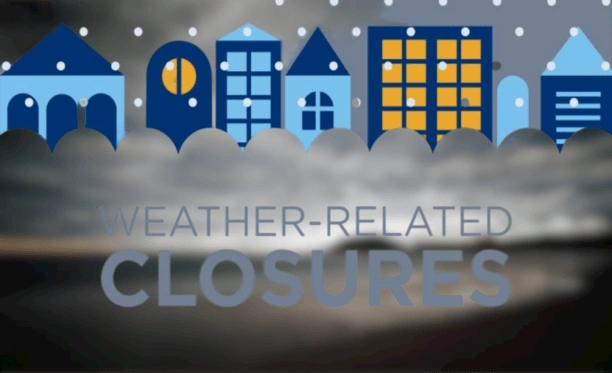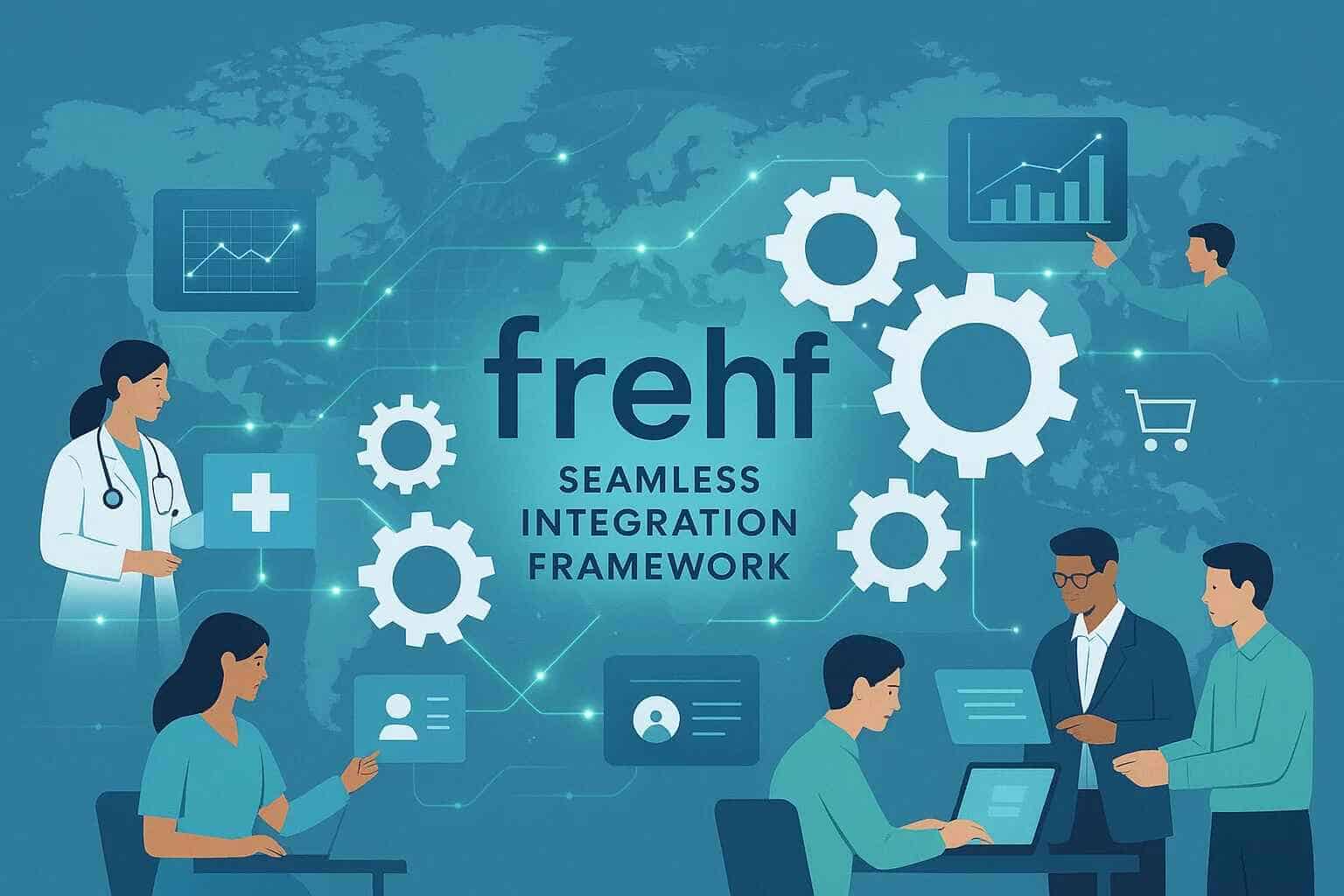Blog
Weather-Related Event Closings: A Comprehensive Guide to Causes, Preparedness, Communication, Logistics, Economic Impacts & Future Innovations

Introduction
In recent years, weather-related event closings have emerged as a critical issue in our ever-changing climate. Sudden snowstorms, hurricanes, heavy downpours, and heat waves often force communities and businesses to pause operations unexpectedly.
This article takes a closer look at these closures, examining what triggers them and how they ripple through daily life, public safety, and economic stability. It also discusses the measures needed to prepare and reduce risks, as well as the challenges faced in communicating during such events.
Additionally, we explore the latest technological tools that provide early warnings and support emergency responses. Whether you’re a policymaker, a business owner, or simply someone interested in community resilience, this guide offers practical insights and advice for managing severe weather disruptions from start to finish.
Understanding Weather-Related Closures: Causes and Impact
Weather-related closures happen when extreme or unforeseen conditions force institutions to shut down. For example, heavy snowfall, floods, or hurricanes can quickly create hazardous conditions. Such events can render roads unsafe and damage infrastructure, prompting schools, businesses, and public services to delay or cancel operations to protect lives.
The consequences extend beyond immediate safety; disrupted transportation, halted services, and costly recovery efforts place considerable strain on local communities. Recognizing these factors is vital for crafting effective strategies to protect both people and property during severe weather.
Planning for Weather-Related Closures: Safety Measures and Preparations
Good planning starts with assessing risks early and setting up clear emergency protocols. Authorities and businesses alike need to prepare for a range of weather scenarios.This preparation might involve mapping out evacuation routes, establishing safe zones, and ensuring essential supplies are on hand. Regular emergency drills in schools and workplaces help everyone know what to do when the unexpected happens.
Municipalities play a key role by keeping a constant watch on weather conditions and working with national agencies to issue alerts. Modern tools like mobile alerts and social media updates add another layer of readiness. Regularly revisiting and updating these plans is crucial as weather patterns shift.
Communication Strategies for Weather-Related Closures
When severe weather hits, clear communication becomes essential. Local officials must set up dependable channels to keep everyone informed about closures and safety steps. Using a mix of methods—such as SMS, social media, and emergency radio broadcasts—ensures that important information reaches all community members promptly.
Collaborating with local media to provide real-time updates helps alleviate public concern and prevents misinformation from spreading. Allowing two-way communication, where residents can share local details, further improves the overall response during emergencies.
Logistical Challenges during Weather-Related Closures
Extreme weather doesn’t just disrupt routines; it creates serious logistical issues. Roads can become blocked, public transit delayed, and emergency routes compromised. These conditions also disrupt supply chains—delaying the delivery of essential goods like food, medicine, and fuel. Damage to critical infrastructure such as power grids and water systems only adds to the challenges.
To restore normal operations, local governments, emergency services, and private organizations must work together to clear obstructions and redirect resources as quickly as possible. Effective logistics management can help reduce downtime and speed up recovery.
Economic Considerations of Weather-Related Closures
Unexpected closures due to severe weather can take a heavy toll on the economy. When businesses shut down abruptly, productivity falls and revenue declines sharply. Local economies, particularly those dependent on tourism or outdoor activities, often suffer prolonged downturns. Beyond the immediate loss of income, the cost of emergency response and infrastructure repairs can strain budgets for both private enterprises and local governments.
Although these challenges are significant, they also push communities to innovate in emergency management and technology. By planning ahead and investing in resilient infrastructure, stakeholders can lessen financial risks and pave the way for quicker recovery.
Innovations and Technology in Managing Weather-Related Closures
Advancements in technology are changing how communities handle severe weather. Today’s forecasting tools use satellite imagery and sophisticated algorithms to predict extreme conditions with greater accuracy. These early warnings give communities a head start in taking protective measures. Mobile apps and automated alert systems quickly disseminate critical information when a crisis looms.
Cloud-based platforms help emergency services coordinate efforts by pooling data from various sources, while drones and remote sensors are increasingly used to assess damage in real time. As these technologies continue to evolve, they will play an even more important role in reducing the impact of weather-related closures.
Future Trends in Weather-Related Closures: Adaptation and Resilience
Looking to the future, managing weather-related closures will depend on our ability to adapt and build resilient communities. Urban planners are designing infrastructures that can better withstand extreme conditions. Innovative green solutions—such as permeable pavements and urban forests—are gaining popularity for their dual role in reducing flood risks and enhancing urban life.
Advances in data analytics and machine learning promise even earlier warnings and more tailored responses to weather events. Moreover, collaborative platforms that bring together insights from citizens, scientists, and local authorities will be essential in shaping robust emergency strategies. Embracing these trends, along with ongoing community education, will help build a foundation of resilience for the challenges ahead.
Frequently Asked Questions
1. What exactly are weather-related event closings?
Weather-related event closings occur when extreme or unexpected weather conditions force public institutions, businesses, or community services to suspend operations. These closures are typically triggered by events like heavy snowfall, flooding, hurricanes, or heat waves. Understanding the nature of these events is key to planning effective responses and ensuring public safety.
2. How do extreme weather events impact public safety and daily life?
Extreme weather can create hazardous conditions, such as icy roads or damaged infrastructure, directly endangering lives. These events disrupt everyday routines—leading to canceled school sessions, halted business operations, and compromised emergency services. The resulting strain on transportation and utilities further compounds safety risks and diminishes overall community well-being.
3. What proactive measures can communities take to prepare for severe weather closures?
Preparation begins with a thorough risk assessment and the development of clear emergency protocols. Communities can map evacuation routes, designate safe zones, stock essential supplies, and conduct regular drills. By integrating modern tools—like mobile alerts and real-time weather monitoring—communities improve readiness and ensure a faster, more coordinated response when severe weather strikes.
4. How can authorities and businesses improve communication during weather-related emergencies?
Effective communication is vital during emergencies. Authorities should establish multiple channels—such as SMS alerts, social media updates, and emergency radio broadcasts—to quickly relay accurate information. Collaborations with local media help maintain transparency and trust, while two-way communication allows residents to report localized issues. These efforts reduce public anxiety and help prevent the spread of misinformation.
5. What logistical challenges typically arise during weather-related closures?
Severe weather can disrupt transportation networks, cause road blockages, and delay public transit. Supply chains also face interruptions, affecting the delivery of food, medical supplies, and other essentials. Additionally, critical infrastructure like power grids and water systems may sustain damage, complicating recovery efforts. Addressing these challenges requires coordinated responses from government agencies, emergency services, and private organizations.
6. How do weather-related closures affect local economies?
When closures occur unexpectedly, businesses suffer productivity losses and revenue drops, while local economies—especially those dependent on tourism or outdoor activities—experience prolonged downturns. The financial strain is intensified by the high costs of emergency responses, repairs, and insurance claims. However, these challenges also spur innovation in emergency management and investment in resilient infrastructure.
7. What technological innovations are currently transforming the management of weather-related events?
Recent advancements in technology—such as satellite imaging, artificial intelligence forecasting, and cloud-based alert systems—are revolutionizing weather monitoring. These tools enable early warnings, better damage assessments, and more coordinated emergency responses. Innovations like drones and remote sensors further enhance real-time monitoring, helping communities to prepare for and respond to severe weather more effectively.
8. What future trends might further improve our resilience to severe weather?
Looking ahead, adaptation and resilience will be driven by flexible urban planning and green infrastructure, like permeable pavements and urban forests, which help mitigate flood risks. Enhanced data analytics and machine learning promise even earlier warnings and more precise response strategies. Collaborative platforms involving citizens, scientists, and government bodies will also be key to building communities that are better prepared for future weather challenges.
Endnote
Weather-related closures present a multifaceted challenge that touches on public safety, logistics, communication, and economic well-being. Recognizing the root causes of these events is the first step in building a solid response plan.
Reliable communication and modern technology are critical for ensuring that communities receive timely information during emergencies. At the same time, strategic economic planning can help cushion the financial impact of these disruptions. By harnessing innovative technologies and adapting to emerging trends in emergency management, communities can better withstand and recover from severe weather events. This guide aims to provide policymakers, business leaders, and residents with the practical knowledge they need to navigate these challenges with confidence.
Also Read: https://theusacorner.com/taylor-swift-producer-hints-at-new-album-release/
Blog
Unlock the Power of Frehf for Seamless Integration

Introduction
In an interconnected world driven by innovation, the ability to simplify, streamline, and enhance efficiency is paramount. Enter frehf, a versatile paradigm that has become a vital asset in various industries. Whether you’re in technology, healthcare, or business, the potential of frehf to optimize operations and foster growth is monumental.
But what exactly is frehf? Why is it gaining traction worldwide? And how can individuals and organizations leverage its full potential? This complete guide provides an actionable roadmap to help you integrate frehf into your workflows effectively while demystifying its core principles.
By the end of this article, you’ll understand the ins and outs of frehf, how it applies across multiple domains, and actionable strategies to start leveraging it to drive meaningful results.
Now, let’s dig deeper to uncover how frehf can revolutionize the way we work, innovate, and grow.
What Is Frehf and Why Does It Matter?
Frehf refers to a cutting-edge framework that enhances interoperability, scalability, and simplicity across systems or processes. At its heart, frehf streamlines complex tasks by breaking them into manageable and understandable components.
Benefits of Frehf:
- Cross-Compatibility: Easily integrates with existing tools or platforms.
- Scalability: Grows alongside your business or infrastructure needs.
- Efficiency: Cuts down operational redundancies, saving time and resources.
From startups to multinational corporations, utilizing frehf helps reduce bottlenecks while improving productivity.
The Role of Frehf Across Industries
Frehf is not confined to one niche; it’s a universal tool with boundless applications. Here’s how some industries are benefiting from its adoption:
1. Technology and IT:
- Facilitates seamless data migration between systems.
- Improves software integration.
2. Healthcare Industry:
- Enhances patient data sharing securely.
- Reduces administrative workflow errors.
3. Retail and E-commerce:
- Automates customer relationship management (CRM).
- Strengthens supply chain operations.
Understanding its cross-industry value makes the case for adopting frehf universally compelling.
How to Implement Frehf for Maximum Impact
Rolling out frehf requires careful planning that aligns with specific organizational goals.
Steps to Get Started:
- Perform a Needs Analysis: Identify where processes need optimization.
- Select Your Tools: Choose platforms compatible with frehf.
- Train Your Teams: Ensure employees understand its practical benefits.
- Test and Iterate: Pilot small programs, gather feedback, and refine them.
By following these steps, you set the stage for success with frehf.
Frehf in Action: Case Studies
1. Streamlining IT Infrastructure
Consider a mid-sized tech company facing integration challenges across its teams. By incorporating frehf principles, the company reduced downtime by 40% and monetized previously siloed data.
2. Revolutionizing Patient Care
A healthcare facility adopted frehf-based systems to streamline data-sharing across departments, leading to improved patient care and faster diagnoses.
Top Tools and Resources for Getting Started with Frehf
When implementing frehf, it’s crucial to select the right tools. Here are some must-haves:
Tools:
- Integration Platforms: APIs like Zapier and MuleSoft.
- Collaboration Tools: Slack, Microsoft Teams.
- Optimization Trackers: Monday.com or Trello.
These tools make it easier to bring frehf to life in your specific context.
Actionable Tips to Avoid Common Frehf Mistakes
While the benefits of frehf are plenty, improper implementation can hinder success. Here’s how to avoid pitfalls:
- Overloading Systems: Start small and scale gradually.
- Ignoring Employee Feedback: Foster collaborative adoption.
- Skipping Data Security Measures: Prioritize compliance and safety standards.
Mindful adoption ensures sustained returns on your frehf strategy.
The Future of Frehf
The evolution of frehf is an exciting frontier. Experts predict that as technology advances, frehf will become even more intuitive, fostering enhanced integrations powered by IoT, AI, and machine learning.
Organizations that become early adopters will not only thrive today but also gain a significant competitive edge tomorrow.
Frequently Asked Questions
What Does Frehf Stand For?
While frehf doesn’t have a standardized full form, it embodies principles like flexibility, reliability, and efficiency in systems and practices.
How Do I Know If Frehf Is Right for My Business?
Evaluate your organization’s challenges, particularly in process efficiency or systems integration. If these are pain points, frehf could be a game-changer for you.
Are There Industry-Specific Tools for Frehf?
Yes, industries like healthcare and e-commerce have custom solutions designed to embed frehf principles seamlessly into their workflows.
Is Frehf Cost-Effective for Small Businesses?
Absolutely. Frehf-focused solutions are scalable, making them accessible even for startups and small enterprises aiming to streamline processes efficiently.
How Long Does It Take To Implement a Frehf Framework?
This depends on the complexity of your current systems, but most organizations see tangible results within 6-12 months post-adoption.
Conclusion
The world is changing, and innovative frameworks like frehf are leading the charge in simplifying workflows, driving efficiency, and scaling future-ready businesses. From its practical benefits in industries to implementation tips and advanced tools, frehf offers countless opportunities for you to optimize your operations.
Whether you’re an entrepreneur, a team leader, or an organizational decision-maker, integrating frehf can transform how you approach challenges and achieve goals. Start your frehf adoption today and reap the benefits of a smarter, faster, and more efficient system.
https://theusacorner.com/united-airlines-flight-ua770-emergency-diversion/
Blog
traceloans.com Debt Consolidation: Your Guide to Financial Freedom

Introduction
Financial stress can feel like an endless loop, especially when debts pile up and managing multiple payments becomes overwhelming. If this scenario sounds familiar, you might find relief through debt consolidation. Enter traceloans.com debt consolidation, a tailored solution designed to simplify your financial obligations and pave the way toward a more secure future.
This guide will help you understand how traceloans.com debt consolidation works and how it can support your financial goals. From streamlining repayment schedules to potentially saving on interest, this strategy can be a game-changer for tackling debt effectively.
Whether you’re struggling with credit card balances, personal loans, or high-interest obligations, this comprehensive guide breaks down everything you need to know. From its benefits and qualifications to step-by-step application processes, you’ll be equipped with insights and tools for making an informed decision. Say goodbye to financial strain and hello to clarity with traceloans.com debt consolidation.
What is traceloans.com Debt Consolidation?
Debt consolidation is the process of combining multiple debts into a single loan, ideally at a lower interest rate or with a more manageable repayment term. Traceloans.com debt consolidation simplifies this process by offering user-friendly, customized solutions to help you regain control over your finances.
Here’s how it works:
- traceloans.com allows you to merge various types of debts such as credit cards, personal loans, and other liabilities into one streamlined payment plan.
- Instead of remembering numerous deadlines and interest rates, you’ll focus on a single monthly payment.
- The service also aims to reduce your overall financial stress with clear terms and no hidden fees.
Who is it for? traceloans.com debt consolidation is ideal for individuals struggling to manage multiple payments, those with high-interest debts, or individuals looking for financial simplicity.
By consolidating your debts, not only will you gain more control over your finances, but you’ll also reduce the chances of missed or late payments, which can negatively impact your credit score.
Benefits of traceloans.com Debt Consolidation
Choosing traceloans.com for debt consolidation comes with several impactful benefits that improve both short-term and long-term financial health.
1. Streamlined Payments
With a single repayment plan, you won’t have to juggle numerous creditors or deadlines. This simplicity makes budgeting easier, giving you a clearer financial picture.
2. Reduced Interest Rates
Combining high-interest debts into one consolidation loan frequently results in lower overall interest rates, saving you money over time.
3. Improved Credit Management
Paying off existing debts and sticking to one payment plan can positively affect your credit score, showcasing your ability to manage finances responsibly.
4. Lower Monthly Payments
By extending the repayment duration or refinancing at a lower rate, traceloans.com can help make your monthly payments more manageable.
5. Stress Reduction
Financial anxiety can take a toll on mental health. Simplifying your debt can free up mental space, allowing you to focus on other important areas of life.
How Does traceloans.com Debt Consolidation Work?
The debt consolidation process with traceloans.com has been designed with simplicity and user convenience in mind. Here’s what to expect:
- Assessment
-
- Submit financial details, including your income, debts, and credit score, to traceloans.com. This helps them tailor a solution that fits your specific needs.
- Approval
-
- After evaluating your situation, traceloans.com will propose loan options with clear terms and conditions.
- Debt Payment
-
- traceloans.com consolidates your debts by paying off outstanding balances directly to creditors.
- Repayment Plan
-
- You’ll receive a simplified repayment schedule for a single monthly payment that’s easier to manage.
The entire process is transparent, meaning you won’t encounter hidden fees or confusing clauses.
Is traceloans.com Debt Consolidation Right for Me?
Before jumping into debt consolidation, consider whether it aligns with your financial goals.
Indicators you’re a good candidate for debt consolidation:
- You have multiple outstanding debts with varying interest rates.
- High-interest rates on your debts are making monthly payments unaffordable.
- You want to simplify your budgeting process.
- Your credit score is stable enough to secure favorable loan terms.
However, debt consolidation isn’t the best option for everyone. If your debts are small or you struggle to handle even minimal payments, other options like financial counseling or budget adjustment might be more suitable.
Common Mistakes to Avoid When Consolidating Debt
When consolidating debt, there are potential pitfalls to avoid so you can maximize results:
- Ignoring Total Costs
Lower monthly payments might feel appealing but could lead to higher overall costs over the loan’s lifetime.
- Taking on New Debt
Avoid falling into the trap of accumulating new debts after consolidation.
- Skipping Research
Don’t settle for the first available consolidation option—compare lenders to find a plan that meets your needs best.
By staying informed and cautious, you can ensure debt consolidation with traceloans.com leads to financial success.
Tips for a Successful traceloans.com Debt Consolidation Experience
- Stick to the Plan
Make timely payments and avoid accumulating additional debt.
- Review Terms Closely
Understand all loan conditions before agreeing to them.
- Build an Emergency Fund
Set aside savings to cover unexpected expenses, reducing reliance on credit.
- Stay Consistent
Consistency is key to improving your credit score and financial health.
FAQs About traceloans.com Debt Consolidation
What types of debt can I consolidate with traceloans.com?
You can consolidate most unsecured debts, including credit cards, medical bills, personal loans, and payday loans. However, secured debts, such as mortgages or auto loans, are typically not eligible for consolidation.
Will my credit score be affected by debt consolidation?
Debt consolidation has the potential to improve your credit score over time by simplifying payments and reducing debt balances. However, initial credit checks and missed payments could cause temporary dips.
How long does the debt consolidation process take?
The length of time depends on individual circumstances, but traceloans.com aims to provide swift approvals, often within a few business days.
Are there any hidden fees associated with traceloans.com?
No, traceloans.com promotes transparency in its debt consolidation plans. You’ll receive clear and upfront information about fees, interest rates, and repayment terms.
Can I still use my credit cards after consolidating debt?
While you can technically use your cards, it’s wise to avoid doing so to prevent accumulating new debt. Focus on repaying your consolidated loan instead.
Conclusion
Debt can feel burdensome, but taking proactive steps through traceloans.com debt consolidation can bring clarity and financial peace. Simplifying your repayments, potentially lowering interest rates, and improving overall financial health are just a few of the benefits offered.
To make the most of debt consolidation, start by assessing your needs, understanding the process, and staying disciplined with repayments. Remember, financial freedom is achievable with the right decisions.
If you’re ready to take control of your financial future, consider exploring traceloans.com debt consolidation—your trusted partner in turning a chaotic debt situation into manageable, stress-free payments. Make today the day you take the first step toward financial freedom!
https://theusacorner.com/united-airlines-flight-ua770-emergency-diversion/
Blog
Protocolo Operacional Padrão Explained: Boost Consistency and Productivity Today

Introduction
Every successful organization relies on structure and clarity for its operations. This is where the protocolo operacional padrão (standard operating procedure) becomes indispensable. Defined as a set of clearly outlined instructions that specify how to perform tasks efficiently and uniformly, it ensures consistency, safety, and quality across the board. From industries like healthcare to manufacturing, the adoption of a protocolo operacional padrão can save time, reduce errors, and improve productivity.
For businesses striving to maintain high performance levels, the importance of standardized procedures cannot be overstated. This article provides a comprehensive explanation of protocolo operacional padrão, from its definition and benefits to how it’s implemented. We’ll explore tactics for creating effective SOPs, common mistakes to avoid, and tips for continual improvement. Whether you’re a business leader, employee, or part of an operations team, understanding these procedures is a critical step toward organizational excellence.
By the end of this guide, you’ll not only grasp why SOPs matter but also be equipped with actionable insights to develop or refine them for your organization. Let’s break it down step by step.
What Is a Protocolo Operacional Padrão?
A protocolo operacional padrão is a document that outlines step-by-step instructions for recurring tasks or processes within an organization. The goal? To standardize operations and ensure employees execute tasks consistently.
Key characteristics of SOPs include:
- Clarity: Written in straightforward, easy-to-understand language.
- Consistency: Ensures uniform application of tasks across teams or departments.
- Detail: Includes specifics on who, what, where, and how tasks will be carried out.
Benefits of Implementing SOPs:
- Error Reduction: Detailed guidelines minimize mistakes.
- Improved Training: New employees can quickly get up to speed with written procedures.
- Efficiency: Streamlined tasks save time and resources.
- Compliance: Helps meet industry regulations and quality standards.
- Scalability: Growing businesses can replicate processes easily.
From small startups to multinational corporations, a well-drafted SOP serves as the backbone for operational success.
Why Every Organization Needs a Protocolo Operacional Padrão
Standard operating procedures are crucial in maintaining order, especially in industries with complex operations. Here’s why every organization should adopt SOPs:
Consistency Across Teams
- SOPs eliminate ambiguity by defining how tasks should be performed.
- They ensure every team operates in alignment with organizational goals.
Enhancing Quality Assurance
- When processes are standardized, product or service quality improves.
- Clear procedures reduce the chances of subpar outputs.
Streamlining Training
- New hires can easily adapt to their roles by referring to clear step-by-step instructions.
- Continuous changes in processes are documented, keeping everyone updated.
With benefits like these, SOPs create a foundation for operational excellence.
How to Create an Effective Protocolo Operacional Padrão
Crafting an SOP isn’t just about writing instructions—it’s an iterative process that requires attention to detail. Follow these steps to create an impactful SOP:
1. Define the Purpose
- Clearly explain what the SOP aims to achieve.
- Example: Guaranteeing food safety in a restaurant or ensuring machine calibration in manufacturing.
2. Identify the Audience
- Consider the skill level and needs of the people using the document.
- Use simple language where necessary and incorporate visuals for clarity.
3. Break Down the Process
- Divide the task into clear, logical steps.
- Use bullet points, flowcharts, or numbered lists for structure.
4. Validate and Test the Procedure
- Ensure the instructions are realistic and achievable by testing them in practice.
- Invite feedback from employees who will use the SOP daily.
5. Regularly Update
- Keep SOPs relevant by revisiting them periodically.
- Adjust for new regulations, technologies, or operational changes.
By following these steps, any organization can develop user-friendly, effective SOPs.
Common Mistakes to Avoid When Implementing SOPs
Avoid these pitfalls when creating or executing your protocolo operacional padrão:
- Overcomplication: Keep procedures simple and avoid unnecessary jargon.
- Failure to Train: Employees should be trained thoroughly on how to use the SOP.
- Lack of Updates: Outdated instructions can cause confusion and inefficiencies.
- Skipping Reviews: Always validate the SOP with real-world testing.
- Ignoring Feedback: Employee insights are invaluable for improving procedures.
Avoiding these mistakes ensures your SOP remains a helpful, practical resource.
Best Practices for Writing an SOP
When drafting an SOP, it’s essential to keep the end-user in mind. Here’s how to optimize yours:
- Use Actionable Language: Start steps with verbs (e.g., “Clean,” “Prepare,” “Inspect”).
- Include Visuals: Diagrams, images, or videos make instructions easier to follow.
- Be Specific: Avoid vague terms like “regularly” or “as necessary”; provide exact timeframes.
A focus on usability ensures your SOP delivers value to its audience.
How to Ensure Ongoing Compliance with SOPs
Creating an SOP is just the beginning; maintaining adherence over time is equally critical. Here’s how to keep your team aligned:
- Monitor Performance: Regularly review how well employees follow the procedures.
- Conduct Audits: Routine checks ensure standards are consistently met.
- Reward Compliance: Recognize employees who follow protocols strictly.
Ongoing efforts help organizations get maximum value from their SOPs.
The Evolution of the Protocolo Operacional Padrão
Traditionally, SOPs were static documents, but modern innovations have transformed how we create and manage them:
Digital Transformation
- Platforms like cloud-based tools now enable real-time updates to SOPs.
- Mobile apps allow employees to access instructions remotely.
Data-Driven Enhancements
- Analytics tools can track SOP effectiveness and highlight areas for improvement.
Organizations are shifting from static SOPs to dynamic, data-oriented tools for better performance and adaptability.
FAQs About Protocolo Operacional Padrão
What industries benefit most from SOPs?
Industries like healthcare, aviation, manufacturing, and food service rely heavily on SOPs. Standardized procedures ensure safety, compliance, and high-quality outcomes in these sectors.
How often should SOPs be updated?
SOPs should be reviewed annually or whenever significant operational changes occur. Regular updates keep procedures relevant and effective.
Are SOPs legally required?
Certain industries, such as healthcare and pharmaceuticals, mandate SOPs to comply with legal and regulatory standards. Always check your sector’s guidelines.
How do digital tools improve SOP implementation?
Digital platforms enhance SOP accessibility, enable real-time updates, and provide usage analytics. Mobile apps and cloud systems are especially beneficial for modern teams.
Can SOPs be used for employee evaluation?
Yes, SOPs can help measure employee performance by assessing how well they adhere to predefined processes. This is a key metric in many organizations.
Conclusion
A well-crafted protocolo operacional padrão is more than just a procedural guide; it’s a powerful tool for ensuring operational success. From streamlining workflows to enhancing employee training and maintaining compliance, SOPs are indispensable for organizations big and small.
To get started, focus on clarity, usability, and regular updates. Train your team and foster a culture of adherence. Leverage digital tools to make procedures dynamic and accessible. Remember, the effectiveness of an SOP lies in its ability to bridge individual actions with organizational goals seamlessly.
Take the first step today—evaluate your current processes and see where a protocolo operacional padrão can add value. Your organization’s efficiency and consistency will thank you.
https://theusacorner.com/how-traceloans-com-credit-score-monitoring-simplifies-your-finances/
Blog
What Is Ukulele History? From Hawaii to Global Icon

The Fascinating History of the Ukulele
The ukulele is more than just a charming four-string instrument; it tells a fascinating story of cultural fusion, global appeal, and enduring popularity. From its early beginnings in 19th-century Hawaii to its status as a symbol of joy and relaxation worldwide, the ukulele has come a long way. This blog explores the rich history of the ukulele, its evolution, and why it has become a cherished instrument for millions. Whether you are a musician, historian, or simply curious about its origins, this article is a must-read.
The Origins of the Ukulele
The history of the ukulele traces back to Portugal, where a small guitar-like instrument called the “machete” was popular. Portuguese immigrants brought the machete to Hawaii in the late 19th century, particularly after the 1879 arrival of the ship “Ravenscrag.” These immigrants introduced Hawaii to an unfamiliar yet captivating sound.
Hawaiian locals quickly embraced the machete, adapting it into their own design. The result? The ukulele, whose name is often translated as “jumping flea” due to the nimble finger movements required to play it. Early Hawaiian craftsmen added unique elements to the instrument, creating the distinct sound we recognize today.
Key milestones include:
- Influence of King Kalākaua: Known as the “Merrie Monarch,” Kalākaua celebrated Hawaiian culture and featured the ukulele in royal festivities.
- Cultural significance: The ukulele became a symbol of Hawaiian identity and pride in the 19th century, solidifying its importance in both traditional and modern music.
The Ukulele in Popular Culture
By the 20th century, the ukulele’s presence expanded far beyond Hawaii. It became a sensation across the United States during the early 1900s, thanks to its appearance at the Panama-Pacific International Exposition in San Francisco in 1915.
The ukulele’s popularity grew further during the jazz age and the Great Depression. Its affordability and cheerful sound made it accessible to performers and everyday people looking for a moment of joy.
- Artists like Cliff Edwards (aka Ukulele Ike) and George Formby were pivotal in cementing the ukulele’s place in popular music.
- Hollywood films and television shows in the mid-20th century regularly featured the ukulele, adding to its charm.
Its resurgence in the late 1990s and early 2000s, largely attributed to artists like Israel Kamakawiwoʻole, reintroduced the world to this beloved instrument. His rendition of “Somewhere Over the Rainbow” became an enduring classic.
Evolution of the Ukulele’s Design
The ukulele underwent several design transformations over its history, enriching both its sound and versatility. Four main types of ukuleles exist today, each catering to specific styles and preferences.
- Soprano – The “classic” ukulele size with a bright tone.
- Concert – Slightly larger, offering a fuller sound and more finger space.
- Tenor – Deeper in tone, preferred by professionals.
- Baritone – Larger yet, with a sound closer to a classical guitar.
Each design reflects changes in musical demands and artistic ingenuity, showing the adaptability of the ukulele in diverse musical genres.
The Ukulele Across the Globe
While Hawaii remains the heart of ukulele history, the instrument boasts loyal followings across the world. For example:
- Japan has a thriving ukulele community, with dedicated festivals and performers.
- The UK saw a surge in popularity during World War II, partly due to George Formby’s influence.
- North America continues to lead in modern ukulele production and innovation.
Even schools and community centers turn to the ukulele as an entry-level instrument for budding musicians. Its simplicity and affordability contribute to its universal appeal.
Ukulele Festivals and Competitions
Ukulele enthusiasts have plenty to celebrate, with festivals and competitions dedicated to the instrument. Events like the Ukulele Festival of Hawaii and the Cairns Ukulele Festival in Australia unite global fans annually.
- They showcase virtuoso performers.
- Participants learn new styles and techniques.
- Vendors introduce custom designs and accessories.
Such events emphasize how the ukulele connects people of diverse cultures and backgrounds through the power of music.
Why the Ukulele is Timeless
Despite being over 100 years old, the ukulele is far from obsolete. It holds a special place in modern music, offering:
- Versatility – Play everything from pop and rock to jazz and classical.
- Ease of learning – Thanks to its simple chords and lightweight design.
- Portability – Ideal for travel and casual jam sessions.
It strikes a chord with musicians and hobbyists alike for its joyful vibe and its ability to bring people together.
The Future of the Ukulele
The ukulele continues to evolve, with advancements in materials, playing techniques, and genres. Younger generations are discovering its charm through platforms like YouTube and TikTok, cementing its place in contemporary music culture.
Additionally, eco-conscious manufacturing and innovative designs point to a brighter future for this beloved instrument.
FAQs About Ukulele History
How did the ukulele get its name?
The term “ukulele” loosely translates to “jumping flea” in Hawaiian. It reflects the quick finger movements users employ while playing. Others suggest the name might have derived from a nickname for a particular musician who popularized the instrument early on.
What instruments influenced the ukulele’s design?
The ukulele evolved from Portuguese stringed instruments, such as the machete, cavaquinho, and braguinha. These instruments were transformed by Hawaiian craftsmen to create a uniquely local sound, leading to the ukulele we know today.
Was the ukulele always popular worldwide?
Although it originated in Hawaii, the ukulele gained widespread popularity in the United States in the early 20th century, especially after the Panama-Pacific International Exposition in 1915. Its appeal expanded further in Europe, Asia, and other parts of the world during subsequent decades.
Why is the ukulele so easy to learn?
The ukulele is beginner-friendly due to its small size, only four strings, and simple chord structures. Many people, even with no musical experience, find they can play basic songs after just a few practice sessions.
Are there different styles of ukulele music?
Yes, the ukulele can adapt to various styles, including Hawaiian, pop, blues, and classical. Modern advances have even introduced electric ukuleles, expanding its reach into new music genres.
Final Thoughts on Ukulele History
The ukulele is not just a musical instrument; it’s a cultural phenomenon with a rich history that continues to inspire. Whether you’re strumming a few chords for fun or performing on a stage, the ukulele symbolizes joy, simplicity, and artistic creativity in one small package.
From its humble origins to global recognition, the ukulele’s history demonstrates how music transcends boundaries. We hope this deep dive into its legacy has given you newfound appreciation and inspiration to explore the ukulele’s magic for yourself.
https://theusacorner.com/kotora-melnkalne/
-

 Tech6 days ago
Tech6 days agoCreate and Translate Videos with Ease: Free AI Video Generator and Smart Video Translator Tools
-

 Health & Fitness7 days ago
Health & Fitness7 days agoUnderstanding Antidepressants: What They Are, How They Work, and Their Impact on Mental Health
-

 Fashion5 days ago
Fashion5 days agoSigns You’re Wearing the Wrong Sports Bra
-

 Health & Fitness2 days ago
Health & Fitness2 days ago5 Tips to Avoid Sports Related Injury






Pingback: MaryJays DC Weed Dispensary Juice Bar Washington Reviews: Ambiance, Quality, Service & Innovation - theusacorner.com
Pingback: Anaëlle Benoist d'Anthenay: Early Life, Education, Art & Cultural Impact - theusacorner.com
Pingback: HOA Callaway Farms: Ultimate Guide to Community Living, History, Amenities, Management, Investment, Future Trends & FAQs - theusacorner.com
Pingback: Hajie Tunkara Chef: From Early Inspirations and Culinary Education to Signature Dishes, Modern Techniques, Sustainability, and a Vision for Future Cuisine - theusacorner.com
Pingback: Insanont: Revolutionizing Digital Engagement by Uniting Humanity, Sustainable Innovation, Creative Connectivity, and Ethical Excellence - theusacorner.com